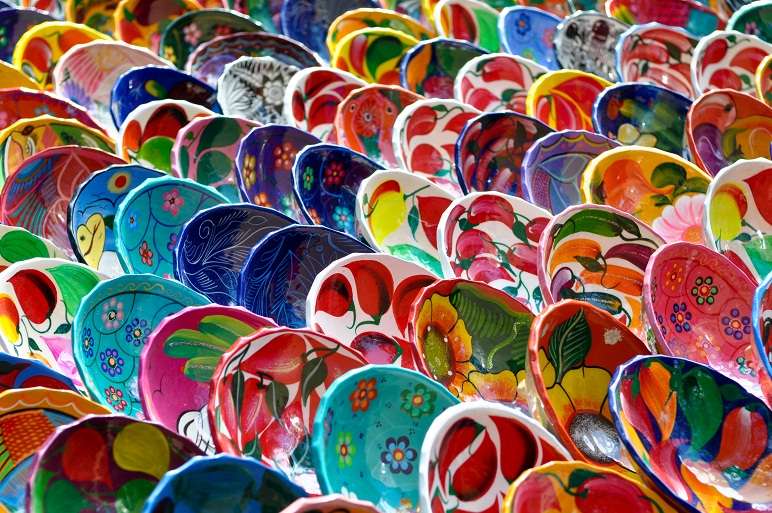Are you looking to inject a splash of color to your dining experience? Mexican pottery plates and dishes are a vibrant way to instantly liven up any dining area, and make for a talking point at your next dinner party. Read our guide for more facts &
Pottery in Mexico ranges from the exclusive and unique handmade variety, right down to modern factory manufactured pieces, particularly when items such as plates and dishes are concerned. Mexican styles in pottery vary from subdued to lavish, however, plates and dishes are often vibrantly colorful in the Talavera style.
Key Features
Plates and dishes in the Talavera style come in a variety of shapes and sizes, and can often feature beautifully curved and carved edges to match patterns on the dish or plate itself. It has a milky glaze with bold blue, yellow and pink hand painted details that are often in radial patterns using leaf and flower motifs. Other colors are also used, such as orange, red, green and teal; however, blue, yellow and pink are the standard.
Pottery in other styles tends not to be as vibrant or eye-catching as the Talavera style, however, they are just as impressive on closer inspection. The green glaze style of Santa María Atzompa reminds one of antique copper, and can include intricate sculpting detail as a relief on its surface.
Some dishes and bowls are very simple glazed clay, and are not particularly intended for show, but to serve very utilitarian purposes. The handmade nature of the pottery, however, still lends it a wonderful rustic characteristic.
What to look for
Some types of Mexican pottery are simply not designed for use as tableware, and this is made clear by the type of finish the pottery has. Look for pottery that has a substantial glaze finish, which will seal the clay to some extent, making it water resistant. If you are looking for the genuine article, Talavera pottery will come with a unique identification code or certificate, and will have the maker’s name and location clearly engraved on the bottom of the pottery. Imitations and replicas carry on the Talavera spirit, however, and whilst their craftsmanship may not be as detailed or thorough, it is readily available and much cheaper.
Care
Because of the hand-made nature of Mexican pottery, the crackled glaze is not as waterproof as commercially manufactured pottery or crockery. As such, it is recommended that bowls and plates are not used for wet foods, such as soups, as the porous clay may absorb it or transfer the clay flavor to the food. The clay, glaze and paint may also be damaged if it is put under high heat conditions, such as in a dishwasher, microwave or oven. Gentle hand washing is the best option for keeping your Mexican pottery plates and dishes clean.





